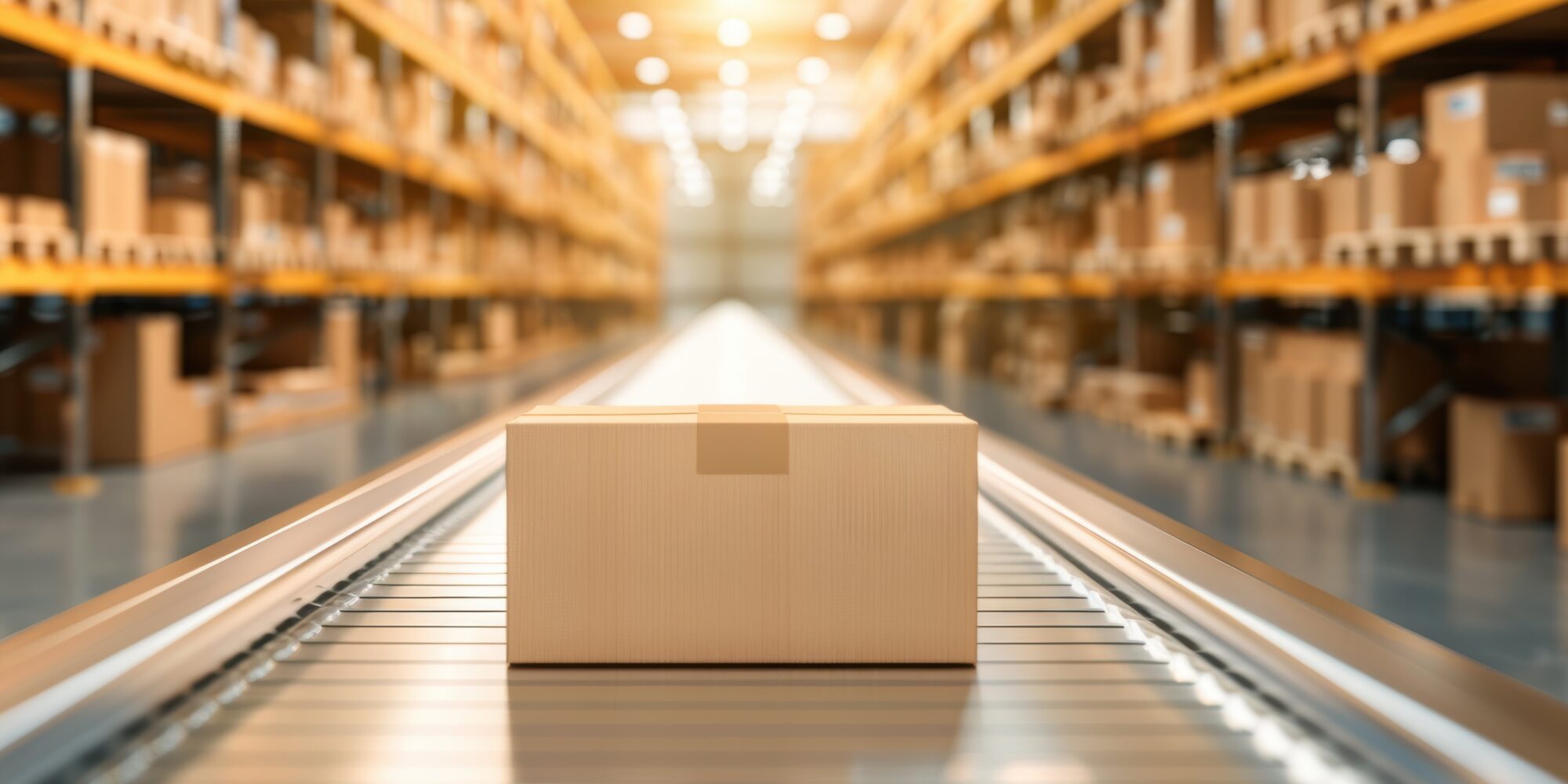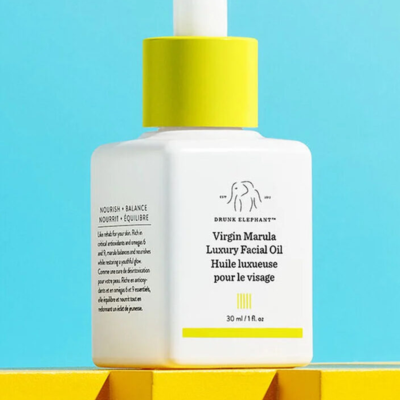
Meet The Supply Chain Expert Making Sure Products Get To Sephora Shelves On Time
When beauty entrepreneurs are simultaneously giddy and terrified about the prospects of launching their brands at Sephora or Ulta Beauty, often one of their first calls is to Hae CPG. Named for the verb “do” in Korean, the firm, which has worked 45 brands since its inception in 2020 and 15 currently, including Wyn Beauty, Kulfi, Aavrani and Experiment, describes itself as beauty’s “ops team for hire.” Basically, its job is to get products to store shelves and customers’ doorsteps with as few hiccups as possible.
Hae CPG founder and CEO Jiyuh Kim, whose introduction to the beauty industry was in operations at the deodorant brand PiperWai when its appearance on “Shark Tank” sent sales skyrocketing 5,000%, can steer brands away from potential supply chain hiccups because she’s seen them in abundance. “Everything can go wrong in the space that we’re in,” she says. “We’ve had trucks disappear with inventory; we’ve had 3PLs lose inventory; we’ve had thousands and thousands and thousands of products get mislabeled; we’ve had product QC issues, all of the above.”
Beauty Independent talked to Kim about emerging beauty brands’ third-party logistics choices, chargeback management, sampling programs, the most common demand forecasting tool, the panic that President-elect Donald Trump’s proposed tariff hikes have induced, and her advice for companies in light of them.
How do you onboard brands?
I’ll usually do a 30-to-45-minute intro call with a brand that I meet for the first time. I ask them a series of questions. It’s almost like a dating period where we’re trying to get to know them, their brand, their journey, and it quickly turns into an operations therapy session on their biggest pain points and priorities over the next six months to a year.
I ask them about their entire supply chain—who are you producing with to who’s actually handling your products and, then once it reaches your 3PL, what goes on beyond that point? What’s your relationship like with retailers? What’s coming for product launches? Once I get an idea of that, we’ll assess how our team can best integrate with their brand.
We split up our work scope into two legs. The first leg covers everything that has to do with getting the products created. We can’t formulate, but once everything’s finalized from a formulation standpoint, we can help with placing the purchase orders with each vendor and manufacturer and routing components to wherever they need to go, making sure that we’re staying on top of the vendors and timelines.
Once everything’s created, we’ll help pick up the goods and route them to their final destination, usually the warehouse or 3PL, and handle everything from that point, that means making sure your e-commerce orders are getting packed and going out properly, auditing your bills, handling your international and domestic shipments to customers and retailers, handling retail fulfillment and operations, making sure we’re delivering everything on time, or if there’s an issue with the inventory, we’re communicating in real time so that there’s no risk to the relationship with the retailer. We also help with chargeback management and quality control of inventory, and we can help with sourcing a new 3PL partner and onboarding new freight forwarders.
What are typical supply chain pain points that emerging beauty brands have?
By the time a founder ends up connecting with me, it’s typically because they’re at a point of panic. They may have lost somebody on their team. These teams operate very lean, so they usually have one contractor or one full-time employee that’s handling all their operations, or they might even just have one full-time employee that’s doing everything, from marketing to operations to production.
So, they’re at a crossroads where they desperately need someone to jump right in and handle all their operations without a lot of handholding. Founders don’t have enough bandwidth a lot of times to train us, and we have to just get in there and handle everything, and we’re great with doing that, so we make their lives a little easier.
Another pain point is they’ll secure a major retail contract like with Sephora, Ulta or Target, and for a lot of founders that have never done this before, it’s a very daunting experience. They might secure a contract a year out, and they’ll reach out as soon as they secure the contract so that they’re setting everything up properly, their three PL is understanding how to pack out those orders to minimize any risk in fulfillment and making sure they have adequate inventory to ship.

What do you charge brands?
My team’s passion is being able to partner with early-stage brands that don’t have the resources available to properly grow. That being said, operations is so involved, and it varies on where you want us to be in your operations, brands’ funding, their growth trajectory, how complex their supply chain is, and if they work with challenging partners or not.
We try and project what each brand’s lift is going to be through the conversations early on. We’ll work with them for about three months. We’ll identify the baseline rate for the brand against other brands’ lifts that are similar to their profile. Then, after about three months, we’ll analyze what their lift looks like and identify a more accurate rate.
Our pricing structure varies based on the size and specific needs of each brand. We aim to keep our rates more approachable than it would be to hire a full-time operations lead or team. On average, building a full-time operations team for an early-stage brand can cost between $150,000 and $250,000 annually, depending on the roles required. Our goal is to provide a more cost-effective alternative to that while providing expert capabilities.
What does a brand that may have never been in a Sephora or Ulta need to do to make sure they’re meeting retail demand?
There’s no one-size-fits-all answer. Overall, we help them look at their historical outbound across all of their channels month-over-month, that means the order volume across all of their SKUs in DTC, Amazon and other retail channels to understand how many units per month they’re shipping out, and then usually these retailers will provide high-level projections.
You want to look at demand to try and get as close as possible to your next replenishment order volume from your manufacturers. Then, you want to look at safety stocks. If you’ve noticed that certain products spike during certain seasons or if a retailer has a sale—Sephora does its Beauty Insider sale, for example—maybe they can communicate to you in advance about the higher order volumes they’re anticipating or if they’re going to place purchase orders for a certain period. We’ll try and anticipate the volume for safety stock to keep on hand to ensure that they don’t stockout.
There’s no perfect math. A lot of the brands that we work with are so young, they don’t have enough historical sales volume to have it be as reliable as we need it to be to predict what’s going to come down the pipeline. As brands mature, they get more comfortable with their numbers, and their outbound channels become more stabilized, but many of the brands we’ve been working with have only been around for one to five years. It’s still super challenging for them to figure it out consistently.
Are there digital forecasting tools that you or the brands you work with to improve forecasting?
There’s no special forecasting tool and it’s because supply chain for these brands is so unique across every single product. So, you might have different touchpoints for different products across packaging, your fill and assembly, even some might have freight that’s coming from different suppliers in one country.
In order to be able to track that all efficiently without spending a lot of money on tools, because these brands are very cash-flow conscious, they turn to Excel. I’ve worked with a lot of financial agencies and fractional CFOs, and they also operate off of Excel. It tends to be the most flexible tool you can use.
We’ve tried to adopt ERPs [enterprise resource planning] for certain brands, and it ultimately ends up becoming too clunky because you have to have really accurate inputs and have it live under one person to ensure that everything is accurate across the board. It becomes too cumbersome and expensive for brands to maintain tools like that.
As we look ahead to the Trump presidency, there’s the possibility of increased tariffs and deportation of immigrants, both of which could impact the supply chain. How much are brands talking about these possibilities?
Our Slack channels with each brand are rampant with comments about this. The majority of our brands source all their components, even paper materials, in China, so everyone’s on edge about what the tariffs mean for cost of goods. There aren’t any solutions because it’s hard to predict what’s actually going to be happening, but it’s definitely the talk of the town.
It’s not only impacting cost of goods, it’s also potentially impacting their freight expenses as well. It’s really challenging to book freight currently, especially with the holidays and Lunar New Year. We’re seeing it trickle down across the supply chain.
Everyone’s starting to panic a bit right now and buy into their inventory so that they can try and avoid the tariffs as much as possible going into 2025. From an advisement standpoint, I think just try and plan your inventory as best as you can to see what you’re going to need for next year. The challenge, though, is not overbuying into your inventory because it’s still such a volatile period.
Be mindful of the costs and what’s going to be coming down the pipeline, but not panicking quite yet and overbuying into inventory because that could have bigger implications next year if you’re unable to sell through it. Try to project out for the next three to six months and buy that inventory now, maybe even creating a safety stock of your components, especially if you’re getting them from China currently. In the future, once we know what’s happening with the tariffs, we can run cost analyses across each country and each material, but right now everything’s coming from China.
You advise brands to order three months ahead, but what you are seeing them actually do?
It’s been pure panic. Normally for new product development, our brands commit to the minimum order quantity because they don’t know how it’s going to perform and do with retailers. So, we had planned on producing minimum order quantities and then placing replenishment orders against what they’ve historically been selling through month-over-month and maybe just doing a blanket like X percent increase to account for growth next year and retail projections.
But, once the election was over, everyone started overbuying into components. We’ve increased quantities across the board for new product development because they’re starting to buy more than they would’ve wanted. Typically, we would buy into three to four months because our brands are usually trying to balance their inventory against cash flow. They can’t spend too much upfront because, ultimately, they’re reliant on the incoming revenue to repurchase inventory. Now, we’re buying well over into six months.
The New York Times had a great story about how staffing agencies working with apparel contract manufacturers place undocumented immigrant workers at them and the possible impacts of greater deportation on manufacturing. Do you think that has implications for beauty?
It potentially could. From a beauty manufacturing standpoint, I’m not as sure, but from a logistics standpoint—your 3PLs, your pickers, the distribution centers that typically rely on temp labor to staff—fulfillment costs might have be affected in the long run, but I haven’t heard anything on the 3PL side yet.
How do you help brands with their 3PL, especially smaller brands that are often not the priority of 3PLs?
I really look into the unique profile of the brand that I’m sourcing for. An earlier stage brand that might not have as high of an order volume might not be able to achieve the same costs that a larger brand might because 3PLs ultimately will design rates around the volume that they’re going to be fulfilling for you and how complex your fulfillment is.
That means, for example, if you are shipping your e-commerce orders and you have a very complicated pack-out for your e-commerce box because you have a beautiful custom shipper and you also want things to go inside a pouch and then it has to get wrapped and there’s stickering, your cost for fulfillment is going to be higher. On top of that, if you have a low volume, it’s going to be significantly higher. Also, as a smaller brand, you don’t want to get ignored. You don’t want to be a small fish in a big pond.
We find partners that are going to be able to give the adequate attention to the brands as much as possible. There’s a delicate dance between cost and service. For smaller early-stage brands, you want to make sure that your customers are getting the best fulfillment experience from your brand because it’s such a critical point in developing the brand story and reputation. Sometimes partnering with 3PLs that might be smaller and charge you more for year one or year two may be more beneficial in the long as you build.

How do you help brands manage chargebacks?
The word “chargeback” tends to be the big scary spooky word that gets brought up when brands secure their first major retail contract. It’s something that unfortunately is an experience that all brands are ultimately going to go through.
From a fulfillment standpoint, a chargeback is when a retail partner will charge the brand for any issues or errors that occurred during their fulfillment process like the label wasn’t placed in the right place when they were packing the order or the pallet was broken when it arrived to the fulfillment center or a delivery appointment wasn’t made by the carrier.
What we do is we get very involved with the retail fulfillment process. We monitor all purchase orders, we make sure that we’re effectively communicating with the 3PL, so that anytime there are orders that come through, we’re watching those orders get packed and go out the door so that way we understand the full story of what happened with each purchase order
We also work with 3PLs to have measures in place so that, if we ever had to investigate a chargeback, we have evidence to go off of, whether that’s photos or scans in and out of the warehouse, information on how it got packed. We might reference documentation like packing lists or bill of lading. As long as you’re able to have as much control over your fulfillment process and visibility into the fulfillment process, you should be able to effectively dispute your chargebacks.
We’ve heard brands talk about wanting backup manufacturers. Is that possible?
We do have brands that do have those backup options. It’s a lengthy process. You still have to go through testing your formulas with new partners. You don’t want manufacturers to know about each other, and there’s always a potential for one manufacturer you’ve been working with for a long period of time to be at risk for losing their relationship because maybe you have this other manufacturer that now has the capability of being able to produce.
Also, with new manufacturers, usually they’re more unwilling to take on new business if you’re willing to commit to a certain order volume throughout the year. So, it can get dicey, but it’s possible.
It’s not an overnight situation. A lot of times our brands might launch a new product and then they stock-out of something because it went viral or something, and they have to quickly produce a new batch and maybe their current manufacturer doesn’t have the capability to do it really quickly. They might try to turn to another manufacturer, but it’s never going to be a process that can be quickly figured out.
This year, several beauty brands that were Amazon holdouts have joined the e-commerce platform. What’s the relationship with Amazon your brand clients have?
I would say 90% of our brands are interested in going into Amazon or have started to do so, and it’s definitely an uptick. Last year, we didn’t have as many brands that wanted to do it. All of our brands go through Amazon agencies to do it.
They’ll think, we have to drive volume because maybe they overbought inventory and are looking for solutions to generate revenue and sell through inventory as quickly as they can. Amazon tends to be the next step. They’ll end up partnering with an Amazon agency because managing the Amazon Seller Central portal is very complicated. It’s easy to get your foot in the door and start shipping to Amazon, but trying to push volume on Amazon tends to be more challenging.
What’s something you’ve been noticing this year that you’re thinking about with next year around the corner?
Sampling programs with retailers is a big thing. A lot of times brands are expected to provide samples and testers to retailers or participate in sampling programs where retailers might cover the cost to a certain extent, but you’re still not generating the profit and revenue that you’d like to be generating through that partnership.
Normally in the past, when a brand starts out with a new retail partner, they get sort of pressured into feeling like they have to commit to these different sampling programs. Down the line, what they realize is they’re not seeing as much of an ROI on doing these programs. It stressed the supply chain process because they would have to abide by the timeline that these retailers are setting and then have to also invest a lot of money and effort into getting these samples made. Now, they’re getting more selective about it or even pulling away from it entirely because they’re just not seeing the results that they had wanted to see.





Leave a Reply
You must be logged in to post a comment.